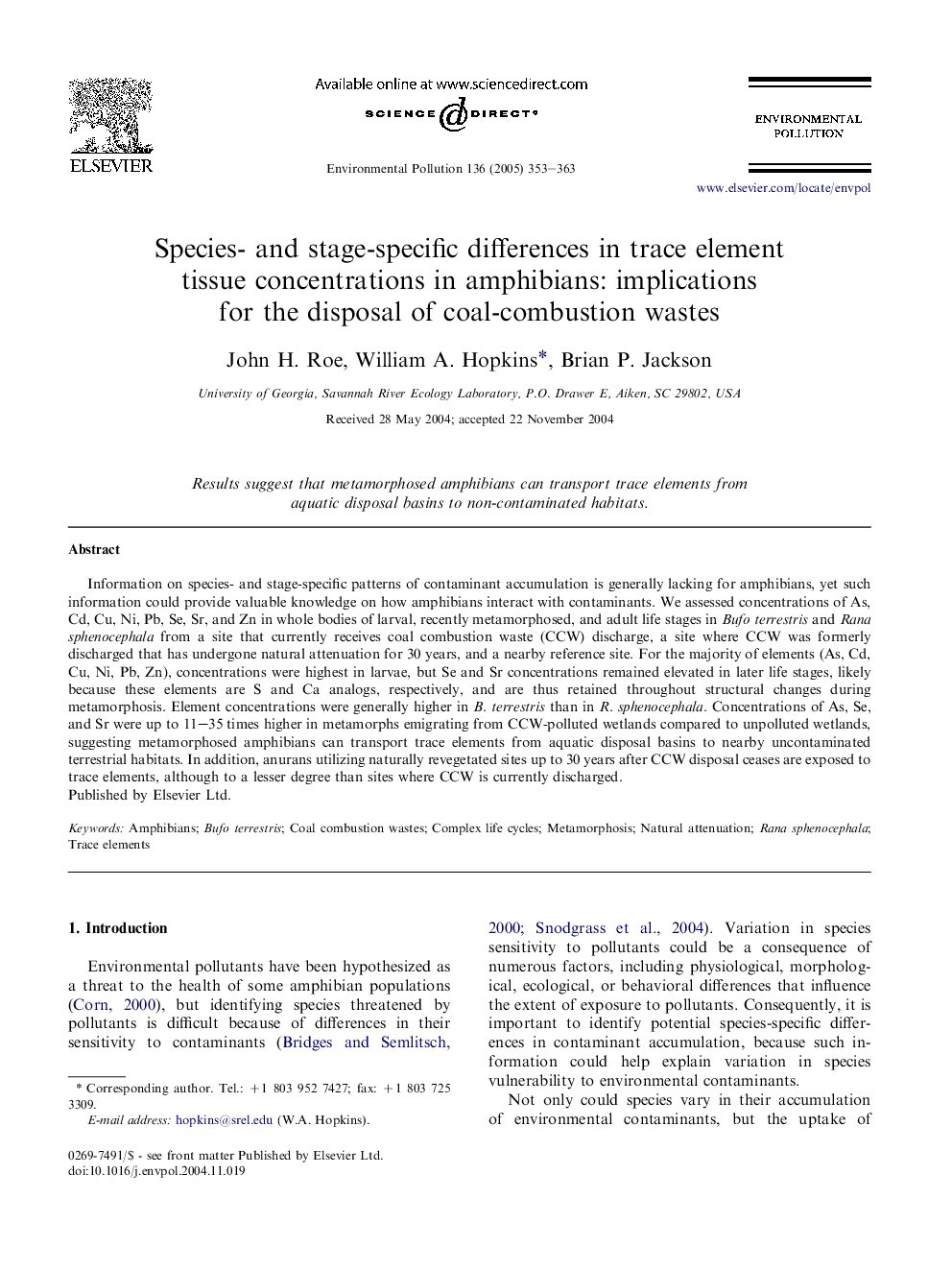| Article ID | Journal | Published Year | Pages | File Type |
|---|---|---|---|---|
| 9456313 | Environmental Pollution | 2005 | 11 Pages |
Abstract
Information on species- and stage-specific patterns of contaminant accumulation is generally lacking for amphibians, yet such information could provide valuable knowledge on how amphibians interact with contaminants. We assessed concentrations of As, Cd, Cu, Ni, Pb, Se, Sr, and Zn in whole bodies of larval, recently metamorphosed, and adult life stages in Bufo terrestris and Rana sphenocephala from a site that currently receives coal combustion waste (CCW) discharge, a site where CCW was formerly discharged that has undergone natural attenuation for 30 years, and a nearby reference site. For the majority of elements (As, Cd, Cu, Ni, Pb, Zn), concentrations were highest in larvae, but Se and Sr concentrations remained elevated in later life stages, likely because these elements are S and Ca analogs, respectively, and are thus retained throughout structural changes during metamorphosis. Element concentrations were generally higher in B. terrestris than in R. sphenocephala. Concentrations of As, Se, and Sr were up to 11-35 times higher in metamorphs emigrating from CCW-polluted wetlands compared to unpolluted wetlands, suggesting metamorphosed amphibians can transport trace elements from aquatic disposal basins to nearby uncontaminated terrestrial habitats. In addition, anurans utilizing naturally revegetated sites up to 30 years after CCW disposal ceases are exposed to trace elements, although to a lesser degree than sites where CCW is currently discharged.
Keywords
Related Topics
Life Sciences
Environmental Science
Environmental Chemistry
Authors
John H. Roe, William A. Hopkins, Brian P. Jackson,
